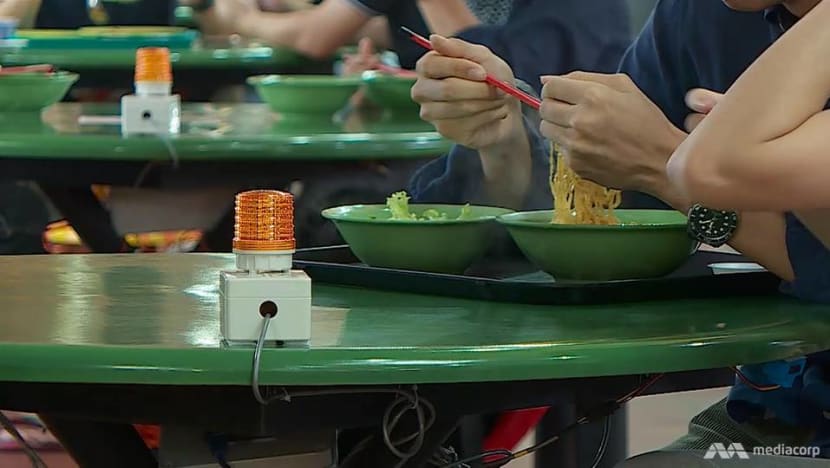What would make Singaporeans return their trays? How about a siren?
Diners in hawker centres often assume that it is the cleaners’ responsibility to clean up after them. Could technology or monetary pressure change that? The programme Talking Point joins in the search for solutions.
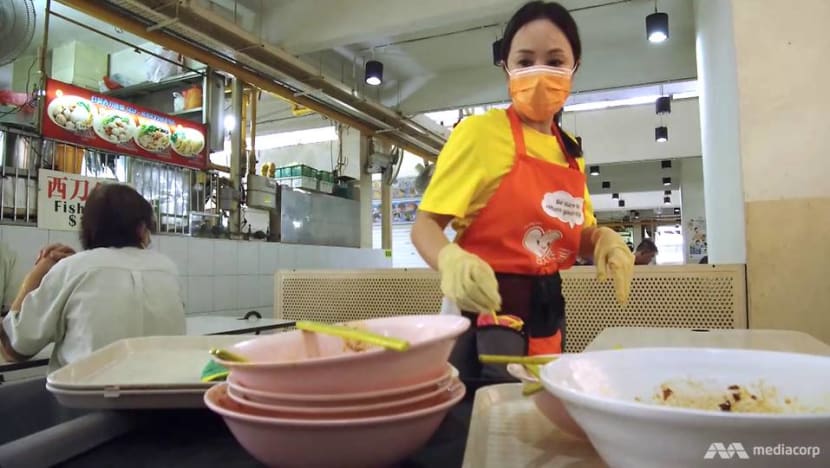
Talking Point host Diana Ser becomes a cleaner for four hours.
SINGAPORE: Chen I-Ming may have found a way to motivate diners in hawker centres to return their trays after their meals.
It is a device that incorporates sensors under each table — to detect the diner’s arrival — as well as lights on the table top and a voice prompt. It is activated as the diner is leaving.
“When people finish the meal, this reminder will immediately alert them that they need to return the trays,” said the chief executive officer and co-founder of Transforma Robotics.
“Most people treat your public announcement as a background noise, (but) this will immediately catch (their) attention.”
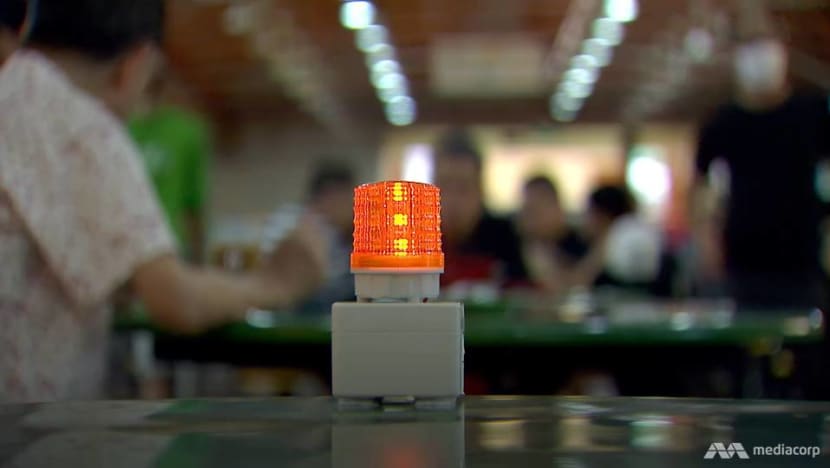
When it was tested at Maxwell Food Centre, about 66 per cent of diners returned their trays, compared with five per cent at tables without the device.
Behavioural expert Loo Deliang, who observed the experiment, thinks the result hinged on the trigger being close by and addressing the diner “personally”, thereby making it unlikely to be missed.
So might this be the way to promote tray return, when national campaigns, posters and even tray-return ambassadors have had little success in educating diners? The programme Talking Point explores this and other solutions to a long-standing problem.
READ> Commentary: Why is it so hard for us to return our trays at the hawker centre?
CLUTTERED FOOD PARADISE
Used crockery and trays left behind on tables in hawker centres have become a familiar sight in Singapore.
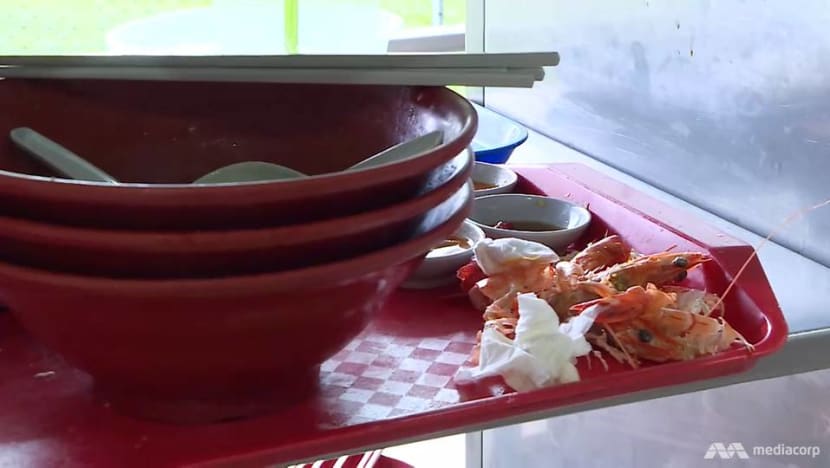
“We have (tried) advertisements, banners … and the cleaners would advise the customers to return the tray after they’ve finished eating,” said Tang Seng Chiew, the head of the hawker association at Berseh Food Centre in Jalan Besar.
“Out of 10 customers, there are only two or three who’d return (their trays).”
The situation at lunchtime “is even worse”.
Just last week, the findings of a National Environment Agency (NEA) survey showed that about nine in 10 Singapore residents felt that patrons should be required to clear their tables at public dining places.
Close to half of the 1,402 respondents, however, felt that clearing one’s own table after eating would deprive cleaners of their jobs.
Some diners think it is not their responsibility at all.
WATCH: What’s it like to be a hawker centre cleaner? (3:45)
“If we meet the not-so-good customers, when we ask them to return the tray, they’d be very rude and scold us,” Chia Siew Kien, who has been cleaning up after diners for six years, told Talking Point.
“They’d say, ‘Why do we hire you cleaners then? (If) we help you do the job already, then what do you have to do?’”
The 45-year-old counters that there is more to the job than that. “After (diners) return the crockery, we still need to help them clear the table and also wipe away the dirty stuff,” she said.
“(Diners returning their trays) would lessen our burden and let other customers have more tables to sit at.”
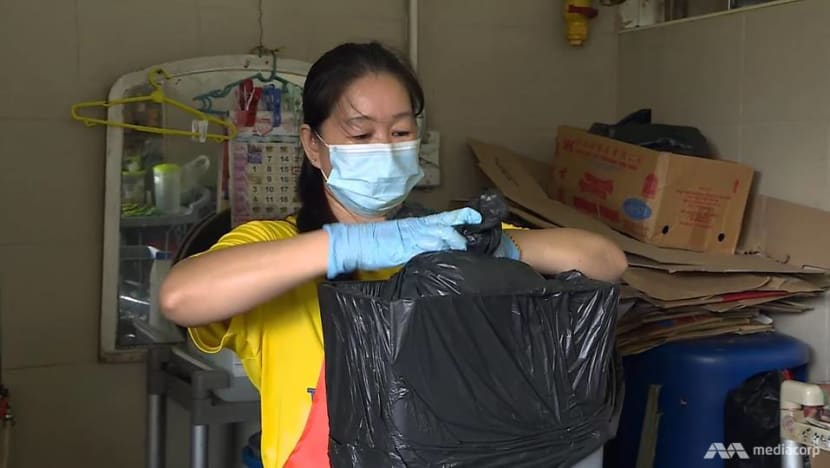
Stallholders also need the trays and crockery to be cleaned quickly, or else they would be unable to serve subsequent groups of diners. Moreover, unclean trays and food scraps may put cleaners and other diners at risk.
“Food trays can carry bacteria like E. coli (and) salmonella from the previous host, and this can be transmitted to the next person touching it without protection,” said public health researcher Matthew Chua.
“Secondly, we don’t know whether birds or animals have come in and feasted on the leftovers and therefore transmitted … animal-borne viruses and bacteria onto the utensils and the tray.”
‘TOWER OF SHAME’
To help make a change, visual artist Audrey Ng created a tower from 300 food trays — the number of trays, on average, not returned within a one-hour period in five hawker centres as recorded by Talking Point.
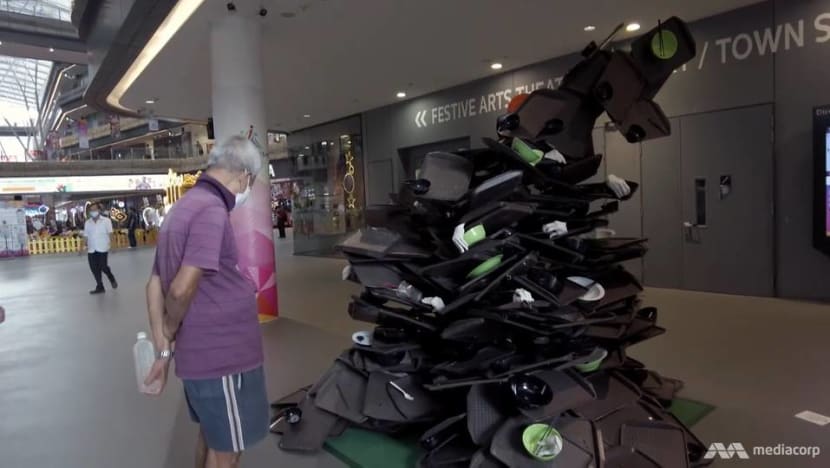
The art installation at Our Tampines Hub shocked many of those who realised the scale of the problem. “I’m calling it our tower of shame,” said programme host Diana Ser.
But will it persuade the public to return their trays? “That’ll be difficult because you have to start from young,” said a passer-by.
Stallholder Bobby Chu agreed that Singaporeans are too entrenched in the view that it is the cleaners’ job to clear the trays. “You need two generations to pass,” he said. “Only then can you make a difference.”
He said this following a Talking Point experiment in Berseh Food Centre — to push diners to return their trays, the cleaners were supposed to only sanitise the tables and clear the tray-return stations.
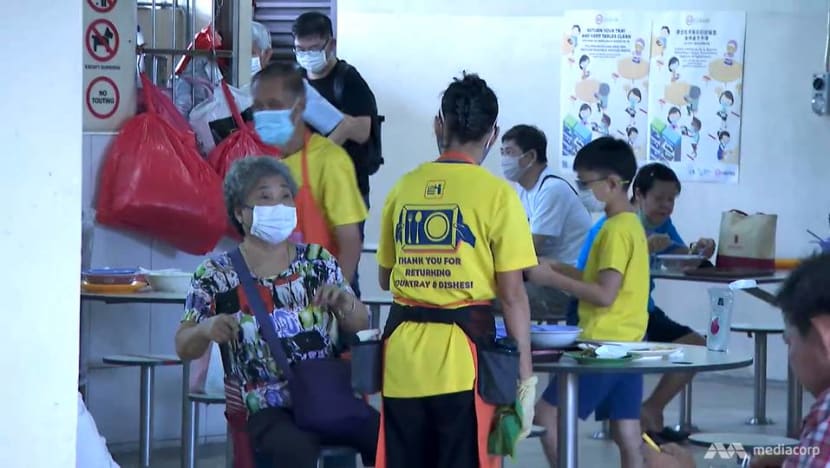
Banners and notices served to inform the lunchtime crowd that the cleaners would not be clearing trays from the tables.
Cleaning supervisor Tan Chin Heng said 40 per cent of the diners returned their trays, compared with 10 per cent normally. But that improvement came at a cost: Seeing the cluttered tables, many diners went elsewhere to eat.
The experiment had to be paused seven times in three hours because of the amount of crockery and trays left at the tables.
“I have customers, but there’s no place to sit. Then how do I do business?” complained Chu. “You’re asking elderly people to return their own trays — it’s not possible.
“None of the young people will do it (either) … They’d stare wide-eyed at you.”
WATCH: The full episode — Why won't you return your food tray? (22:53)
When cleaners tried to persuade diners to return their trays, they met with scoldings and even vulgarities.
Quality assurance officer James Tan from Chang Seng Services said this kind of abuse can lead his cleaners to resign or refuse to work, thereby worsening the problem.
TARGETING DINERS’ WALLETS
There is one solution, however, that has had success. In 2016, private operator Timbre Group introduced a system whereby diners pay a S$1 deposit for a tray and get the money back after they return the tray.
The automated system also incorporates a centralised dishwashing system, which makes retrieval of the crockery and trays faster and more efficient for stallholders.
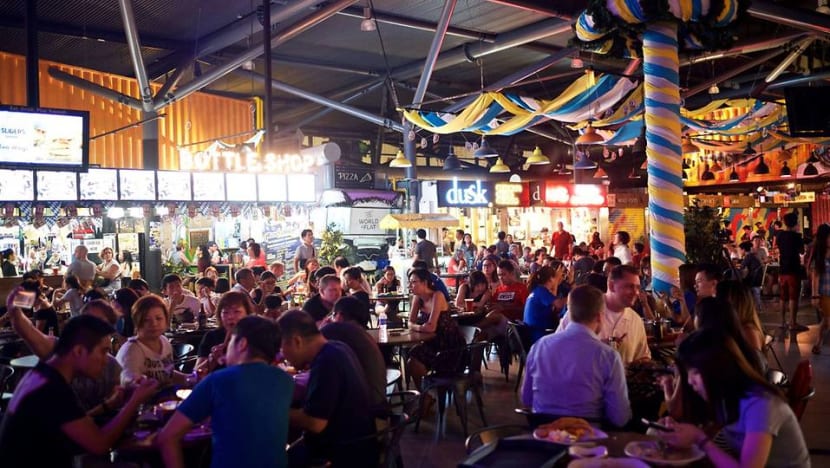
According to Timbre, the tray-return rate at its hawker centre in one-north is close to 98 per cent.
But when automated tray-return systems were introduced to other hawker centres, there were detractors upset about having to pay a deposit.
Some diners refuse a tray, and some make nasty remarks to hawkers, who feel that the system is affecting their business.
Despite Timbre’s success, only 10 hawker centres in Singapore have an automated tray-return system. Still, the NEA has said it will roll out this system to up to 25 hawker centres in phases.
And cleaning contractor Ong Siong Jiunn, who helped to implement it at the Block 163 Bukit Merah Central Food Centre, thinks it is for the better.

“Before this system started over here … the cleaners that I had (were) carrying very heavy tubs of crockery,” said the business owner.
“After this system started, their only job now is to wipe the tables (and) urge the customers to return their own trays or crockery. So it makes life much easier for elderly cleaners.”
Is it a better, however, to solve the tray-return problem by targeting diners’ wallets or by changing their behaviour, with or without siren-like devices?
Ultimately, it should be “something less intrusive”, said Loo, associate director (Analytics and Behaviour Change) at the National University of Singapore's Office of Estate Development.
“People associate sirens with … warnings,” he noted. “That isn’t something we want to promote in hawker centres relating to tray return.”
But there should still be “good triggers” as well as “clear and available” tray stations, he said. “With all these in place, and with the cleaners’ role redefined to encourage people to return trays, I think it’ll work then.”
Watch the first of these two Talking Point episodes here. The programme airs on Channel 5 every Thursday at 9.30pm.
